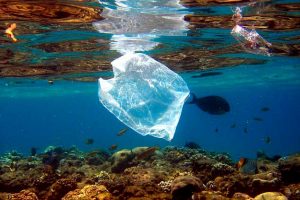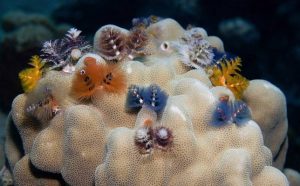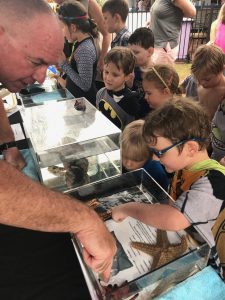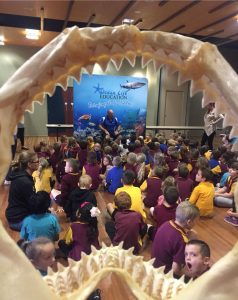 Ok let’s be honest – a few weeks into January and most of our New Year resolutions have already fallen by the wayside – destroyed by all the excesses that make summer so much fun! And while it’s fantastic to want a fitter, more fabulous you, the time has come to devote our energies to fixing the environment instead.
Ok let’s be honest – a few weeks into January and most of our New Year resolutions have already fallen by the wayside – destroyed by all the excesses that make summer so much fun! And while it’s fantastic to want a fitter, more fabulous you, the time has come to devote our energies to fixing the environment instead.
The health of the ocean is declining and even if you don’t live within coo-ee of the coastline, chances are this will still impact on you at some stage. Its estimated more than one third of the world’s population depends on seafood for 20% of their animal protein.
And while issues like overfishing and global warming need to be tackled on a large scale, there are many simple steps we can take to improve the quality of our waterways and the lives of their inhabitants – not just for us but for generations to come.
Here are 5 achievable resolutions for 2018…
1. The last straw! They may be convenient – but at what cost?! Not only do straws clog up our landfill, but they’re amongst the top ten items found on beach clean ups. They’re not recyclable and they take hundreds of years to break down – a big price to pay for a single use item with a lifespan of around 20 minutes on average! Reusable glass, stainless steel and bamboo varieties work just as well in your smoothies and don’t cost the earth! http://www.biome.com.au
2. BYO Cup! Disposable coffee cups are another item that just won’t go away – no matter how much we try to ignore them. It’s estimated our caffeine addiction is adding 60,000 kg’s of coffee cups to land fill and the environment every year. And while no-one is suggesting cutting back on your favourite brew, taking your own cup can make a world of difference. And if one of the many glass or ceramic varieties aren’t practical, there are collapsible coffee cups that are easy to cart around. https://cupy.com.au/
3. It’s in the bag! The problem of single use plastic bags is well documented to the point that several states including Queensland are now planning to ban their use. And while it does take a little more effort to BYO, sea turtles of the world will thank you! Unfortunately, your average green turtle cannot distinguish between floating flimsy plastic and their favourite food – sea jellies. And with the added bonus of being less likely to break than the plastic imposters, reusable bags are a great way to show you care!
4. Take 3 for the Sea! It’s simple, doesn’t take much effort and could help save the sea from turning into plastic soup! Every time you’re near a waterway just pick up three bits of rubbish and dispose of them. The beauty of this environmental movement is any age, any fitness level can help create a cleaner coastline and prevent further waste from ending up in the sea. Imagine what could be achieved if everyone of us did this simple task every day! http://www.take3.org/
5. Learn more about our impact! Ignorance is not bliss – the more we know, the better equipped we are to prevent environmental problems getting any worse. Read up, keep across local conservation issues and help educate children about being responsible global citizens right from the start. Ocean Life Education has made it our mission to care for the sea and all who live within it – help us to spread the world through one of our fun filled programs. https://www.oceanlifeeducation.com.au/programs



 It appears that nature outdoes us when it comes to festive displays. Coral reefs showcase their decorations all year round in a vibrant celebration of Christmas…or more particularly, the Christmas Tree Worm.
It appears that nature outdoes us when it comes to festive displays. Coral reefs showcase their decorations all year round in a vibrant celebration of Christmas…or more particularly, the Christmas Tree Worm.
 Ocean Life Education had the rare opportunity to take the Ocean to the Outback this week, as part of a funding program supported by the State Government initiative, Advancing Queensland.
Ocean Life Education had the rare opportunity to take the Ocean to the Outback this week, as part of a funding program supported by the State Government initiative, Advancing Queensland.